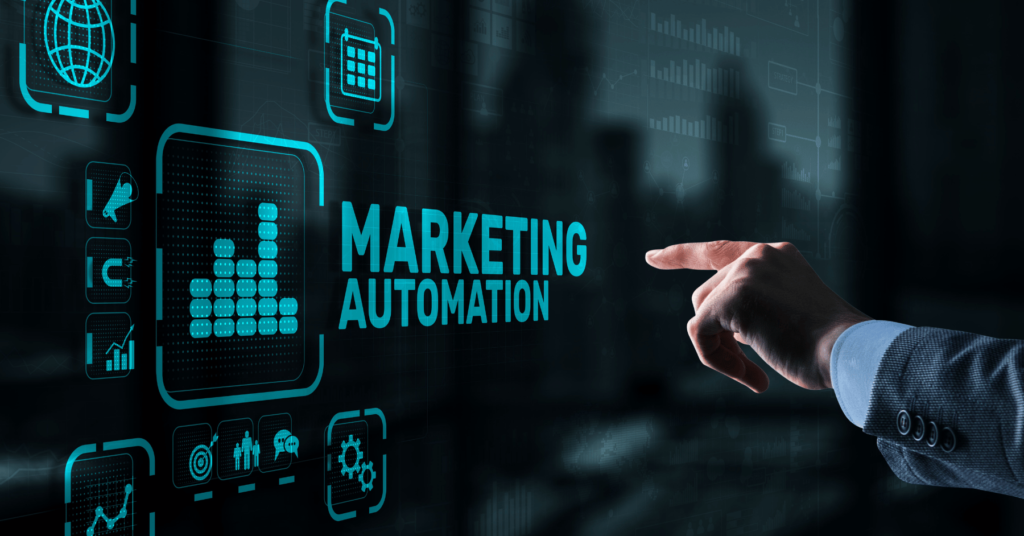In today’s fast-paced digital landscape, SaaS companies are constantly seeking innovative ways to streamline their marketing efforts and drive growth. One of the most powerful tools in their arsenal is marketing automation. By harnessing the power of automation, SaaS companies can enhance efficiency, increase scalability, and deliver personalized experiences to their target audience. In this comprehensive guide, we will delve into the world of SaaS marketing automation, exploring key strategies, best practices, and real-world examples to help you unlock automation excellence and elevate your marketing efforts.
The Power of SaaS Marketing Automation
What is Marketing Automation?
Marketing automation refers to the use of technology and software platforms to automate repetitive marketing tasks, streamline workflows, and deliver personalized content to prospects and customers. For SaaS companies, marketing automation offers a plethora of benefits, including:
- Enhanced Efficiency: Automation allows marketers to streamline repetitive tasks such as email marketing, lead nurturing, and social media posting, freeing up time to focus on strategic initiatives.
- Increased Scalability: With automation, SaaS companies can scale their marketing efforts more effectively, reaching a larger audience without significantly increasing resources or overhead costs.
- Personalized Customer Experiences: Automation enables SaaS companies to deliver personalized content and experiences to prospects and customers based on their behavior, preferences, and demographics, driving engagement and loyalty.
Key Strategies for SaaS Marketing Automation
1. Lead Scoring and Segmentation
Effective lead scoring and segmentation are essential for maximizing the impact of SaaS marketing automation. By assigning scores to leads based on their engagement level, demographics, and buying intent, SaaS companies can prioritize leads for follow-up and deliver targeted messaging tailored to their specific needs and interests.
Example: A SaaS company offering project management software may assign higher scores to leads who have visited pricing pages or downloaded case studies, indicating a strong interest in purchasing the product.
2. Automated Email Campaigns
Email marketing remains one of the most effective channels for SaaS companies to engage with prospects and customers. With marketing automation platforms, SaaS companies can create automated email campaigns that deliver personalized content at key touchpoints throughout the customer journey, nurturing leads and driving conversions.
Example: A SaaS company offering accounting software may send a series of onboarding emails to new customers, guiding them through the setup process and highlighting key features and benefits.
3. Behavior-Based Trigger Campaigns
Behavior-based trigger campaigns allow SaaS companies to deliver timely and relevant messaging to prospects and customers based on their actions and interactions with the brand. By setting up triggers for specific behaviors such as website visits, email opens, or form submissions, SaaS companies can automatically send targeted messages that address the user’s needs and preferences.
Example: A SaaS company offering customer relationship management (CRM) software may trigger a follow-up email to a prospect who has visited the pricing page multiple times but has not yet converted.
4. Dynamic Website Personalization
Dynamic website personalization enables SaaS companies to deliver customized experiences to website visitors based on their behavior and preferences. By leveraging data from past interactions, SaaS companies can dynamically adjust website content, messaging, and calls to action to match the user’s interests and stage in the buying journey, increasing engagement and conversions.
Example: A SaaS company offering project management software may display different homepage banners to visitors based on their industry or job title, showcasing relevant use cases and benefits.
5. Social Media Automation
Social media automation allows SaaS companies to schedule posts, monitor conversations, and engage with followers across various social media platforms more efficiently. By automating routine tasks such as content sharing, hashtag tracking, and follower engagement, SaaS companies can maintain an active and consistent presence on social media without dedicating significant time and resources.
Example: A SaaS company offering marketing automation software may schedule posts on LinkedIn, Twitter, and Facebook to promote upcoming webinars or product launches, reaching a wider audience and driving traffic to their website.
Best Practices for SaaS Marketing Automation

- Maintain Data Hygiene: Regularly clean and update your contact database to ensure accurate and reliable data for segmentation and personalization. This involves removing duplicate or outdated contacts, verifying contact information, and updating records with any changes or new insights gathered from interactions.
- Test and Iterate: Continuously test different automation workflows, messaging strategies, and campaign elements to identify what resonates most with your audience and drives better results. A/B testing, also known as split testing, allows you to compare the performance of different variations of emails, landing pages, and other marketing assets to determine which approach yields the highest engagement and conversion rates.
- Integrate Your Tools: Integrate your marketing automation platform with other tools and systems such as CRM software, email marketing platforms, and analytics tools to create a seamless and cohesive marketing ecosystem. Integration enables data sharing and synchronization across different systems, providing a unified view of customer interactions and enabling more personalized and targeted marketing efforts. Example: Integrating your marketing automation platform with your CRM system allows you to track lead interactions, automate lead nurturing workflows, and sync customer data between sales and marketing teams for a more coordinated approach.
- Monitor Performance Metrics: Track key performance indicators (KPIs) such as open rates, click-through rates, conversion rates, and ROI to measure the effectiveness of your automation efforts and make data-driven optimizations. Regularly monitor performance metrics to assess the impact of your automation campaigns, identify areas for improvement, and make informed decisions about resource allocation and strategy adjustments.
- Stay Compliant: Ensure compliance with data privacy regulations such as GDPR and CCPA when collecting and processing customer data for marketing automation purposes. Data privacy and security are critical concerns for SaaS companies, especially when handling sensitive customer data. Make sure to obtain explicit consent from customers before collecting their data for marketing purposes, provide transparency about how their data will be used, and implement robust security measures to protect against unauthorized access or data breaches.
Conclusion
SaaS marketing automation holds immense potential for streamlining workflows, delivering personalized experiences, and driving growth for SaaS companies. By implementing the strategic strategies, best practices, and real-world examples outlined in this guide, you can harness the power of automation excellence and elevate your SaaS marketing efforts to new heights. Embrace automation, unlock efficiencies, and propel your SaaS business toward success in today’s competitive landscape.






